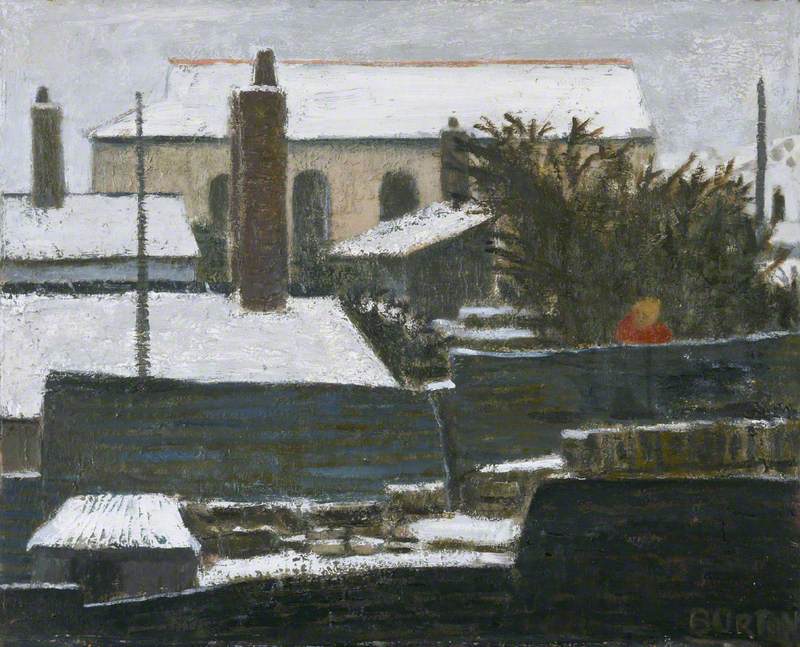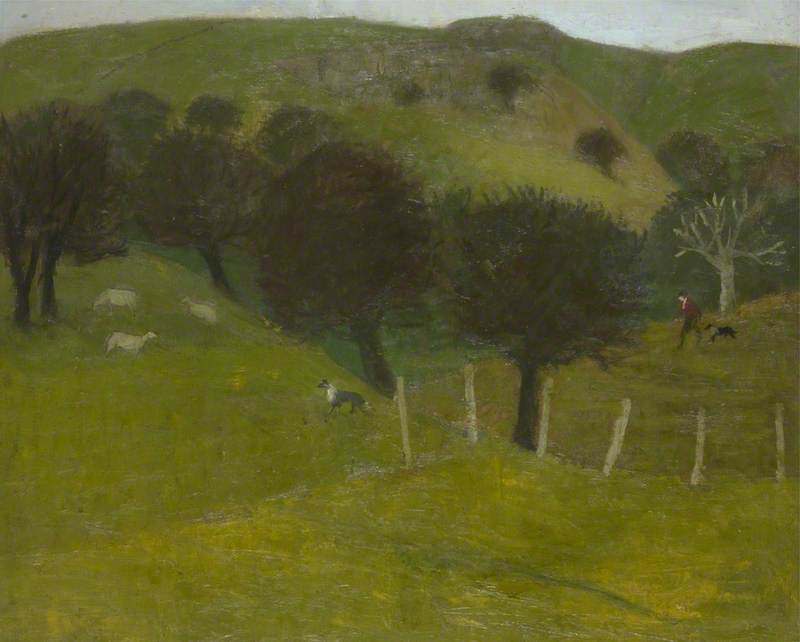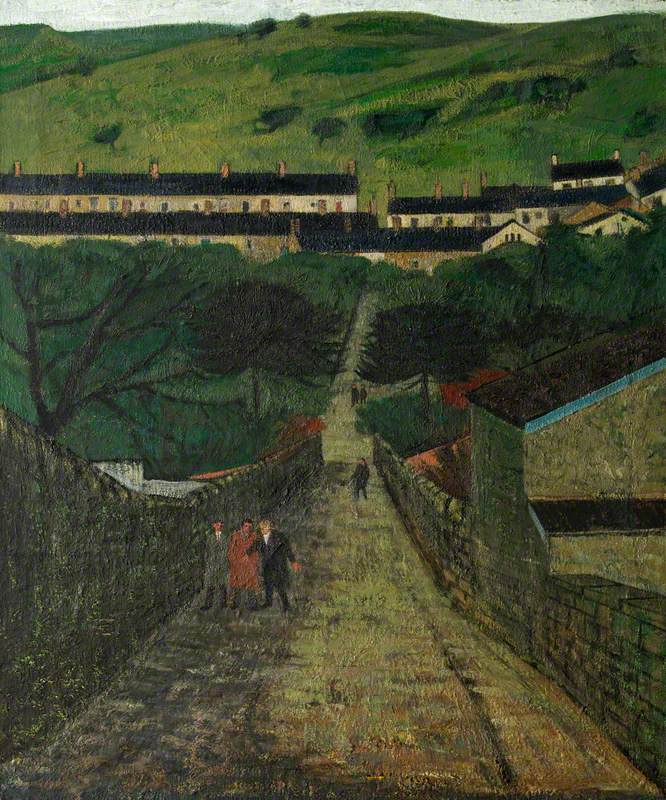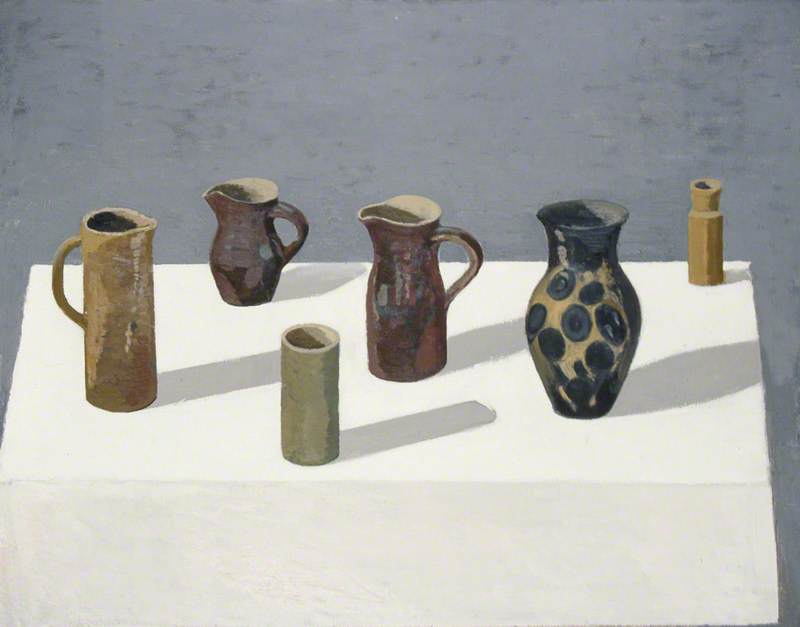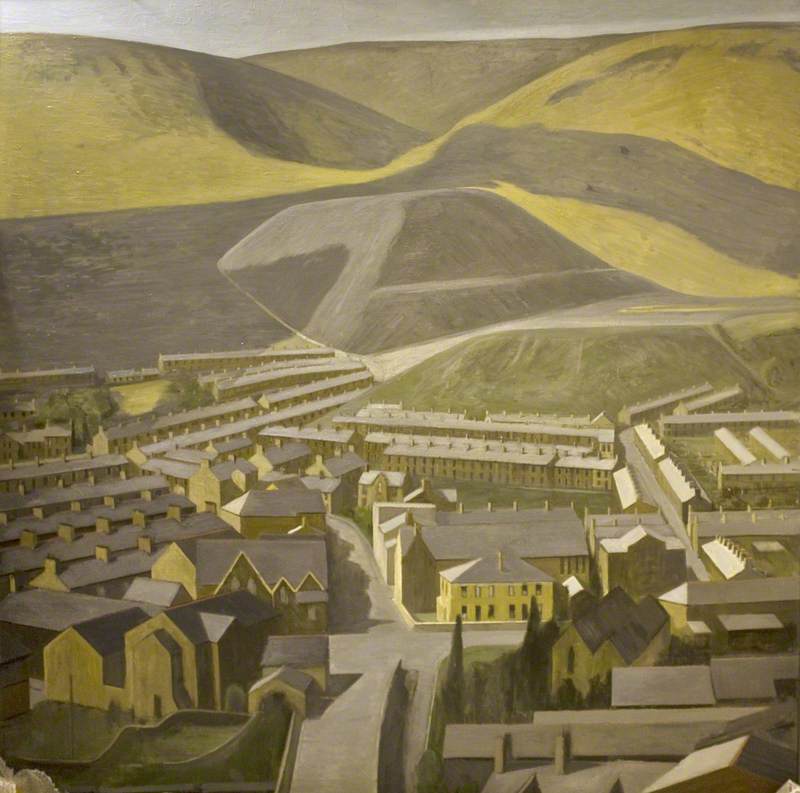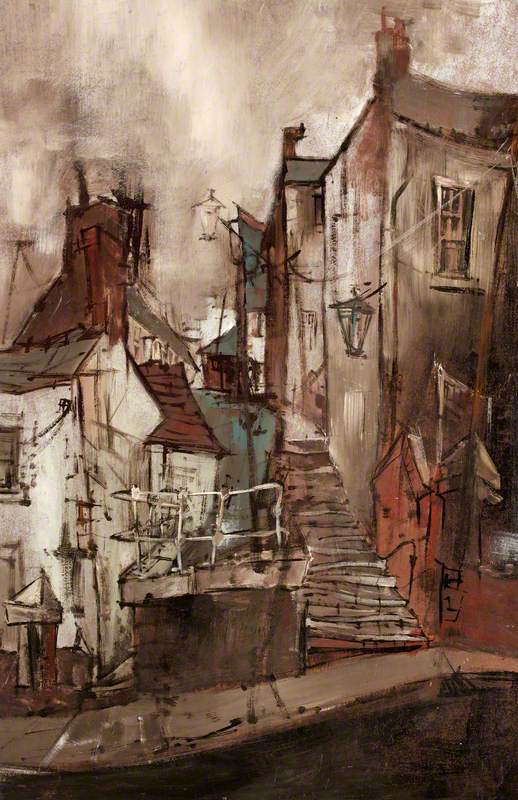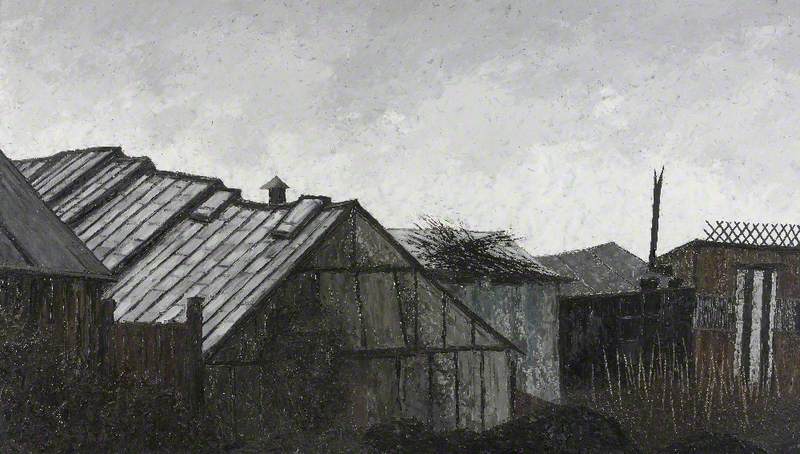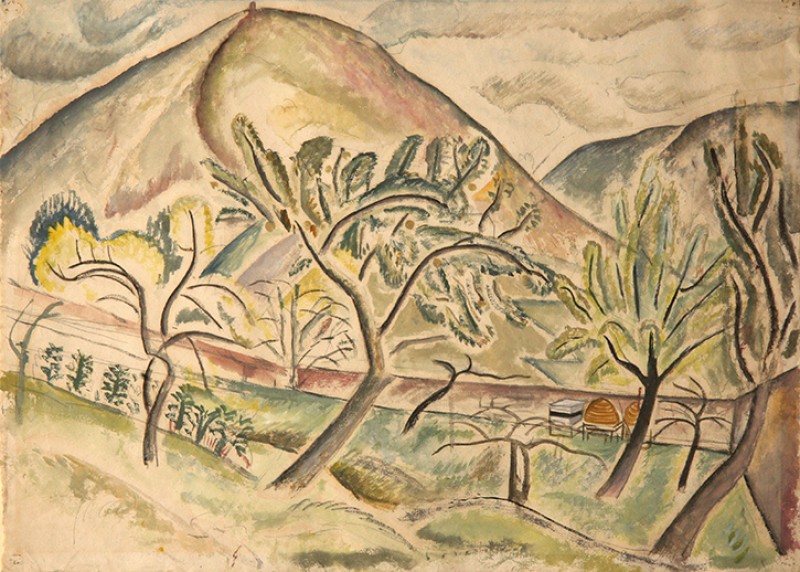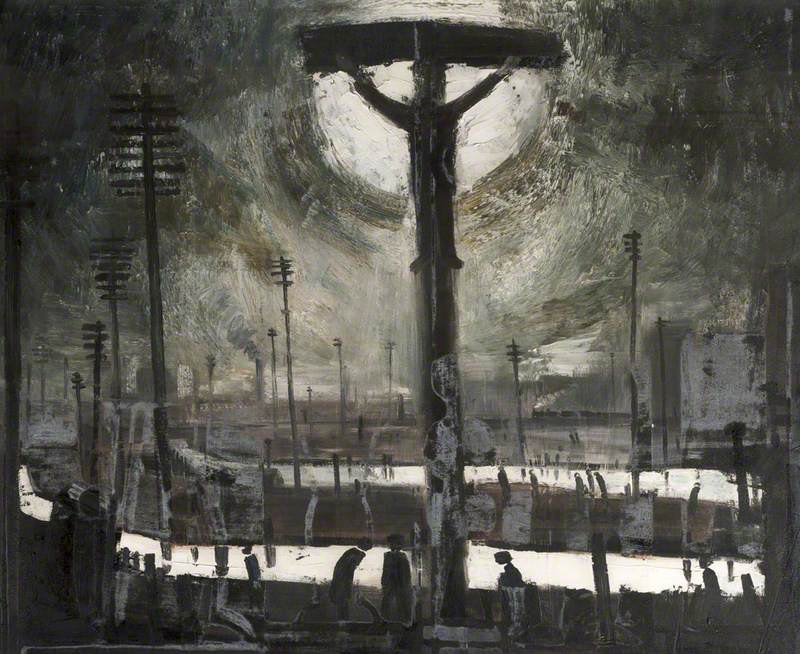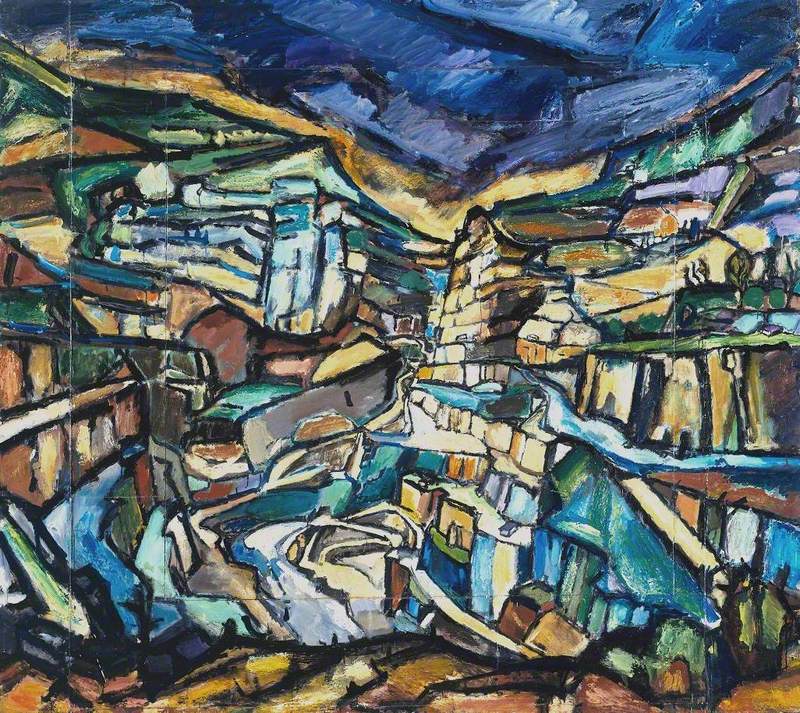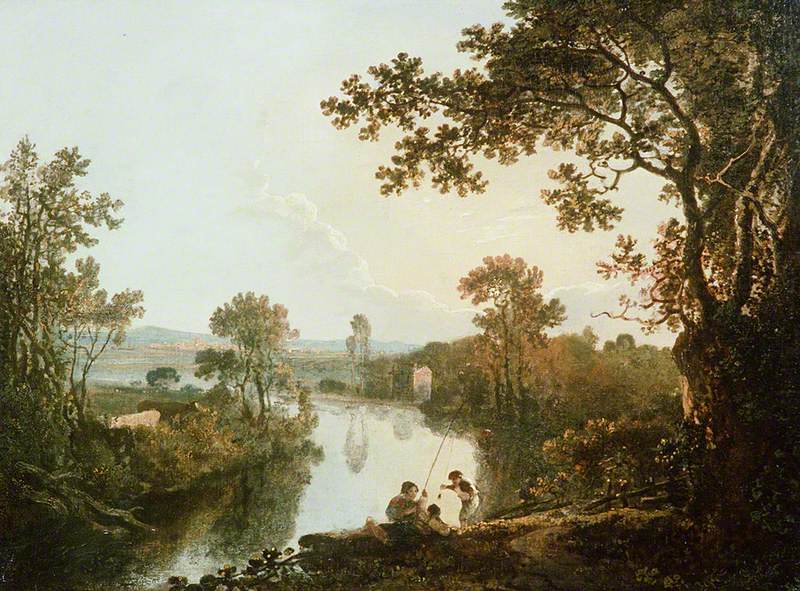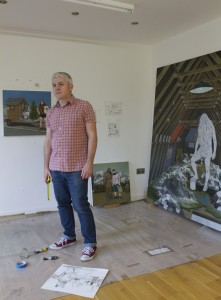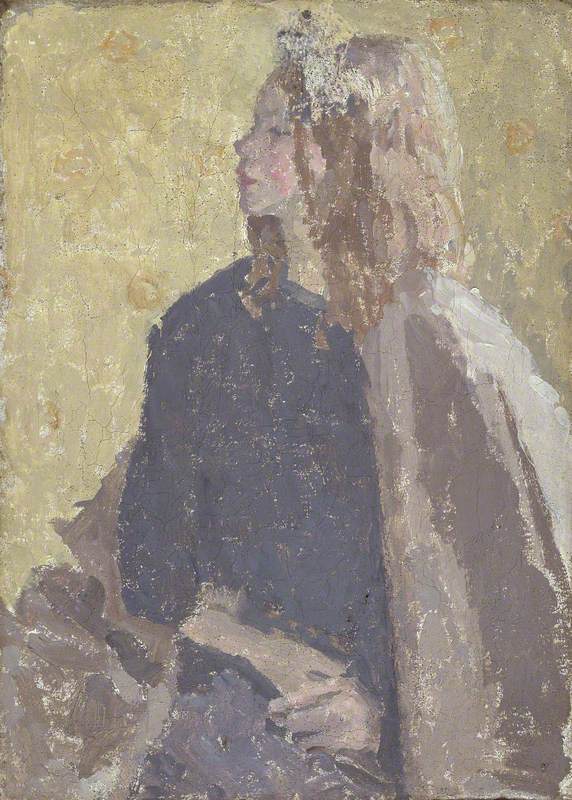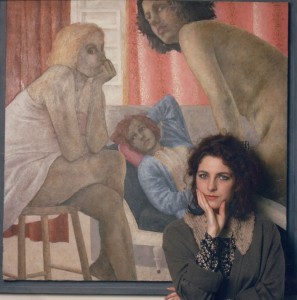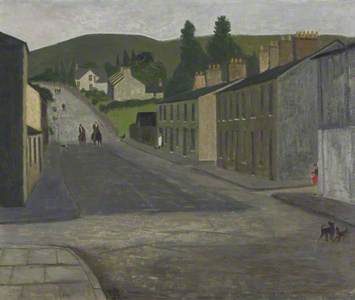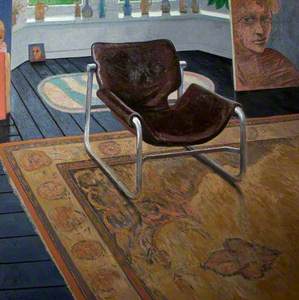Even though I have been looking at paintings all my life, writing a book to mark the 90th birthday of Charles Burton has made me look at them afresh. Studying his lifetime's work has not just helped me to appreciate one unsung master but has led me deeper into painting as a practice. I'm not alone – David Alston says in his foreword to the book: 'Meeting the work is like meeting Charlie: affable, amenable but then probing, inviting the longer look and interrogation.'
Charles Burton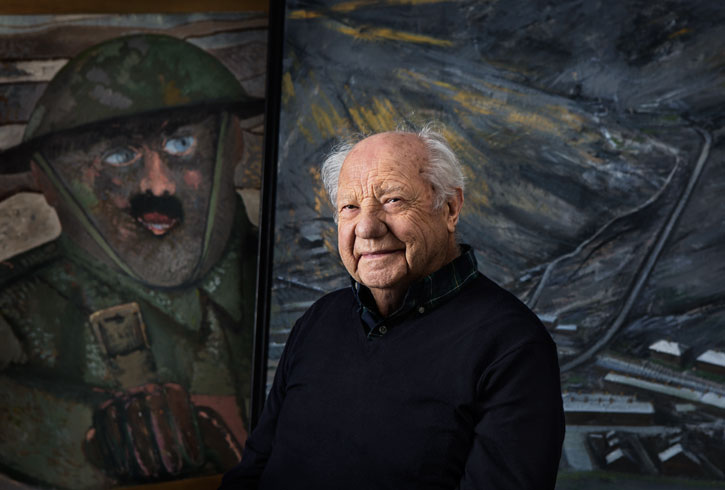
His work has something I can only call a brilliant serenity – I titled the book Charles Burton: Painting Still in recognition of that essence as well as his creative longevity. For six decades, Charles Burton has been one of the major figures of art in Wales but something of a secret elsewhere. Born in 1929, he grew up amid the poverty of the pre-war Rhondda Valley. Even as a student at Cardiff School of Art he won recognition and his work was purchased for public collections. At the Royal College, Carel Weight described him as one of the most lively in a generation that included Frank Auerbach, Peter Blake, Leon Kossoff and Bridget Riley. Throughout the 1960s he was head of painting at Liverpool College of Art, but he returned to s in 1970, where he has painted ever since.
Charles calls painting a 'filthy business' but it has captivated him for more than 70 years. From his late teens to his late 20s, he painted his home in the Rhondda Valley with sincerity and clarity. The Government Art Collection bought one of his paintings, Welsh Landscape, when he was just 20, and hung it in the office of Aneurin Bevan. Before he was 22, the Glynn Vivian Art Gallery acquired one for its permanent collection and the Arts Council bought two. Aged just 24, he was awarded the Gold Medal in Fine Art at the National Eisteddfod of Wales, putting him in company with established figures such as Brenda Chamberlain and in due course Josef Herman, David Jones and Ceri Richards.
Successive histories of Welsh art have recognised his impact as the lead figure in the Rhondda Group, a cluster of students whose commitment to their own environment in the south Wales coalfield was influential for rejecting exotic or imagined subject matter for what was on their doorsteps. Their work helped other artists grasp as subject matter environments seen as 'unpictorial'.
The sincere realism that captured so much attention is demonstrated by one of the paintings the Arts Council bought in 1951, Snow in Treherbert. By the expectations of British art a few years earlier this would be unpromising material: the view over miners' backyards behind his Rhondda Valley terrace. The straightforward presentation was equally fresh: an unshowy technique and surfaces flat to the picture plane with no focal motif. Yet the view is subtly remade. The cold tones of walls and corrugated-iron, pebble-dashed chapel and leaden sky are lifted by a spot of red and warmer browns. Though the crammed space gives no way through, the snow-topped surfaces seem like steps out of the jumble to the verticals of chimneys, posts and chapel windows and to the flank of the mountain beyond. The structure is honed: the sliver of light scintillating between the tall chimney and the window, the dark wall that grounds the composition, and the ridge-tiles and blond head that observe a horizontal golden section.
The surprise of his early works in the 1950s was that they represented coalfield communities at ease with themselves. These were not the images of deprivation and desolation audiences were used to. Farmers on Horses conveys the calm of a summer evening in Treorchy. The road leads invitingly toward the hills: two farmers ride into town on horseback and strollers pass them while a housewife in a sparkling apron watches with a toddler at her feet. Dogs gambol and kids peer playfully around a corner. Even the expanse of road and pavement describes an orderliness to public space and contributes to the harmony of greys and greens that rhymes road with sky and fields with trees.
Many of Charles' student paintings threw aside academic presentation in favour of an open-hearted, childlike pleasure in familiar places. This quality is seen in his trees, drawn as the simplest lollipop of trunks and branches. His colours were saturated with little modelling and his subjects were placed straight-on as if to say plainly 'this is what is here'. Rhondda Mountain shows a farmer and his dogs walking on a hillside vibrant in its greenness; something worth saying about a landscape known for coal tips.
By the time Charles left Cardiff School of Art, he was a well-known painter, he had influenced others and he was represented in public collections. It was an extraordinary record of achievement at the age of 22. When he won the National Eisteddfod Gold Medal at 24, it was for Back from the Club. The judges said: 'This artist is still a young man with his career as a painter to make, but he has already established himself as an artist of great subtlety and understanding.' The painting was perhaps the apogee of his 'innocent' style, an invented scene in which he ran a road boldly through the middle of the composition. Walls, trees and terraced houses were schematic. Simplified figures strolled up the gradient, swaying slightly from their hours in the working men's club.
Leather Chair with a Painting of Marion
1981–1998
Charles Burton (b.1929) 
At the Royal College, he forayed into varied idioms, as in Gentle Houses, which creates a heightened world that would have been familiar to his friend in Merthyr Tydfil, the refugee expressionist painter Heinz Koppel, in which the shapes of night-time objects move, balloon and spark with coloured outlines. The slate roofs, trees and terraces are the Rhondda but imply home universally and the protection that it offers.
Other paintings from this time attained calm clarity in a naturalistic idiom, such as Walking in the Snow, a harmony of whites, greys and ochre as controlled as Morandi's pale still-lifes. Three tiny spots of vivid colour energise it – red, blue and pink. The view down the Rhondda Valley across a snow-covered park embraces figures without destabilising the composition – a couple arm-in-arm, a watcher in a window, a tiny dog careering through the snow. In London in 1956 his first solo exhibition was reviewed in The Times: 'while the painting is sufficiently realistic to convey the impression of places actually seen, their mood is so poetic that they also appear to be charming and dream-like fantasies.'
In 1956 he took up a lectureship at Liverpool College of Art, soon becoming Head of Painting. John Lennon and Stuart Sutcliffe were among his students. By the time he left, in 1970 to become Head of Fine Art at the South Glamorgan Institute of Education, Liverpool was judged one of the best painting schools in the country.
It is between times, a ribbon through the past, and inspires different readings: calm and beautiful or apocalyptic.
At the age of 51, he returned to full-time painting, though he exhibited so selectively that even well-informed commentators didn't see his work. An exhibition at the British Council in Brussels was followed by one at the Welsh Arts Council gallery in Cardiff titled 'Family, Some Chairs, a Number of Tables and Mary Queen of Scots'. He has always painted subjects that he loves and knows completely, seeking the universal in his own particular: objects he lives with, members of his family, interiors in his home.
He is fascinated by the honest use of paint to state what it is, a surface made of pigment, while exploring the tensions between representation and pictorial structure. He says: 'I always aim for a kind of absolute serenity, and quite often I will start off with the most awkward shapes so that I don't rely on simply a division of the canvas in any mathematical way that would provide harmony. Quite often they're stupidly awkward – like a chair painted the size it really is, which sets up all sorts of problems – and I work at them for ages and ages to make them balance.'
He completed a sequence of extraordinary interiors in which single chairs were centrepieces. All of them were square 'six-footers', so big as to make it natural to look into the space rather than at the surface, as though they were trompe l'oeil. But the spaces in these paintings are far from natural. Leather Chair with a Painting of Marion occupies a riotous space of floorboards, walls, leaning pictures and angled windows, yet he quarries stillness. His downward view provides a sure foundation; an oval rug lends shape to what would otherwise be dark on dark. Several devices stop the railroading of the eye: boards turned crosswise, the nearer rug just fractionally off alignment, the cant of the bay window that closes the perspective.
Marion's Jugs was among the earliest of many paintings of ceramic vessels he made with his friend Marion McMullen in France. He described his process: 'It was a resolved painting of jugs related to one another and to their environment. In time this didn't feel right, I worked on the painting and each jug came to exist in its own right unrelated to the other jugs and in a blank space. Had the jugs been people, and they could easily have been, each would have been inward-looking, not communicating and just standing as one might in an uncomfortable drinks party.'
In the late 1990s, he broke through a barrier he had felt to painting the Rhondda Valley, which had changed so radically since he lived there. Suddenly, he realised that he might follow Constable and others by painting memory: 'the realisation that the now and the past lives in all of us has made it possible for me to paint pictures from my roots.'
He brought four more decades' knowledge to the subject he once tackled so directly. One of the masterpieces of this period is the huge Ton Pentre, crisp in its strong light and empty streets. The colliery has gone but there are as yet no cars, the terraces are still roofed uniformly in slate and the church has not been demolished. It is between times, a ribbon through the past, and inspires different readings: calm and beautiful or apocalyptic. He said some 40 years ago: 'I like as little to happen in pictures as possible. In a way I like to think of them as being a bit like Chekhov plays, where there's an enormous amount of feeling and nothing very much happens.'
At 90, Charles feels still: 'from my point of view there's only one thing worth doing in the world, and that's painting.'
Peter Wakelin, writer and curator
Charles Burton: Painting Still by Peter Wakelin is published by Sansom & Co
The exhibition 'Charles Burton: 90th Birthday Exhibition' was at the Martin Tinney Gallery, Cardiff, from 14th to 29th August 2019

